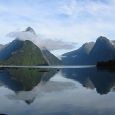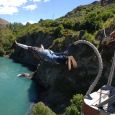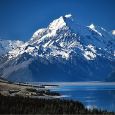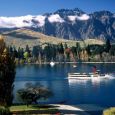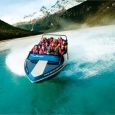Queenstown
Advertisement
By Air
Queenstown airport services both domestic and international trans-Tasman air links. Air New Zealand flies directly from Australia all year round and Qantas Airways offers a winter service from Australia. Domestically Air New Zealand and Qantas Airways offer scheduled services.
Self Drive
Wanaka (103 km) is approximately 1.25 hours drive from Queenstown if you follow the main State Hiway. The shortest route to Wanaka is over the Crown Range Road, however it's a challenging drive. Allow at least 7.5 hours from Christchurch (486 km), 3.5 hours from Dunedin (283 km), and 5.5 hours from the West Coast (Franz Josef glacier 404 km), plus any additional time desired for stops. In winter, road conditions should be checked before travelling to the Queenstown region.
Rental Car Hire: There is a number of rental car and campervan companies that have offices in Queenstown.
Coach
There are several companies which have a nation-wide network that includes a scheduled service to Queenstown. There are also a number of smaller companies operating services to and from Christchurch, Dunedin, Wanaka, and the West Coast.
Bungy Jumping
Probably Queenstown's most famous thrill-seeking activity is bungy jumping (also known as bungee jumping), where a long elastic cord is attached to the ankles or harness, and the person jumps off a large height. New Zealand was brought to the forefront of adventure sport when in 1888 AJ Hackett opened the first commercial bungy jump from the Kawarau Bridge, 43 metres (141 feet), over the Kawarau river.
Today, a bungy jump off the Kawarau Bridge will cost NZ $150.
The Earnslaw
Queenstown's famous "Lady of the Lake" has been in operation since 1912, when it first set off on its Maiden Voyage from Kingston. Originally designed to carry sheep, cattle, and passengers to high country stations around the lake, today the Earnslaw runs tourist cruises to Walter Peak high country station.
The beautiful steamship was refurbished in 1984, when the 12m high funnel was painted bright red, and the hull a brilliant white. And living up to the town's name as being fit for the Queen, in 1990 the Earnslaw carried Queen Elizabeth II and Prince Phillip.
Jet Boating
The "waterjet" was originally built by Bill Hamilton, later and more formally know as Sir Charles William Feilden Hamilton, in 1954. The boat was designed to navigate the narrow and shallow rivers in the Queenstown area, such as the Shotover and Kawarau rivers. In 1960, Kawarau Jet became the first commercial jetboat company in the world, and is still running today, along with Shotover Jet, and other small companies.
As they propel themselves, the front lifts from the water, so there is little drag on the boat. For this reason, jetboats can run in less than 30cm of water, and are highly maneuverable at extreme speeds, amounting to an exhilarating, torque-filled ride, through narrow gorges and rivers. The jetboat can perform some very scary moves, such as the "Hamilton Turn", where the jetboat spins 180 degrees and stops within a body length of the boat.
Fiordland
Fiordland is New Zealand's largest national park at almost 3 million acres. It covers much of the southern part of the South Island's West Coast.
The Sounds in Fiordland are arguably the most beautiful places in New Zealand, and that's saying something! Wildlife, waterfalls, unforested valleys, crystal clear lakes, and elegant mountains are what make up the views, and the only signs of human inhabitation are the tracks running deep into the bush, and the cruises down the sounds.
Mount Cook
Mount Cook is New Zealand’s tallest Mountain, standing 3754 metres (12,316 ft) above sea level. It used to be the world’s 37th most prominent mountain standing, until the eastern face of its northern peak fell off in 1991. The Mountain was renamed to Aoraki/Mount Cook in 1998 following a settlement between The Crown and local Maori tribe Ngai Tahu, honouring the original Maori name meaning "Cloud Piercer", and continues as the only example of a conjoint name in the South Island where the Maori name is expressed first, signifying the mountain's national cultural importance.
Information not available


